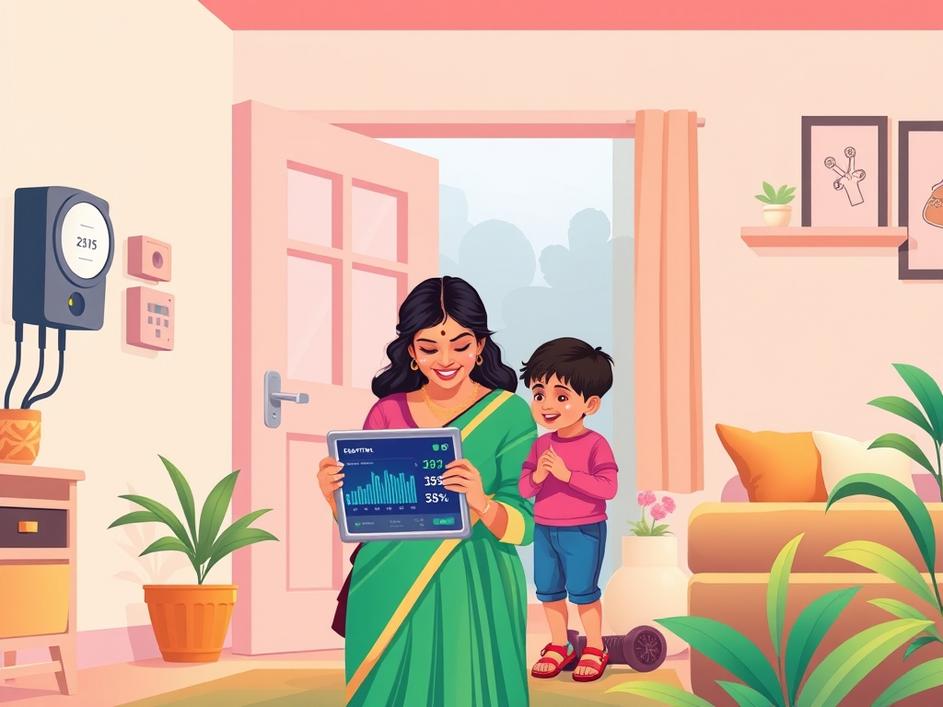


We are a digital agency helping businesses develop immersive, engaging, and user-focused web, app, and software solutions.
2310 Mira Vista Ave
Montrose, CA 91020
2500+ reviews based on client feedback

When we talk about new technology, we often think of shiny new phones or self-driving cars. But sometimes, the biggest changes happen in places we barely notice, like our electricity meters. Recently, a wave of interest has swept through Amaravati, where over 32,000 power consumers are actively asking for Smart TOD (Time of Day) meters. This isn’t just about a gadget; it’s about people taking more control over their power usage and, importantly, their bills. It marks a shift, showing that folks are eager for better, clearer ways to manage their household expenses and energy footprint. It’s a pretty big deal when thousands of people, on their own, decide they want a new kind of meter.
\n\n
What's Included?
Toggle\n
So, what exactly are these smart meters that everyone wants? Imagine your old electricity meter, but with a brain. A Smart TOD meter doesn’t just count your total electricity use. It keeps track of when you use power. Think about it like this: electricity demand goes up during certain hours, like when everyone comes home from work and starts cooking dinner, watching TV, and running air conditioners. These are called ‘peak hours.’ During these times, electricity can be more expensive to provide. Then there are ‘off-peak hours,’ often late at night or very early morning, when fewer people are using a lot of power. With a Smart TOD meter, the cost of your electricity changes depending on the time of day you use it. This means you might pay a bit more during peak times but a lot less during off-peak times. The idea is to give people a chance to save money by shifting some of their heavy power use to cheaper hours. It offers a level of detail and control that traditional meters just can’t.
\n\n
\n
Why are so many consumers in Amaravati suddenly keen on these meters? It boils down to a few key promises: accurate bills and the potential for real savings. Nobody likes getting an electricity bill that feels like a surprise. With older meters, it can be hard to know exactly what’s driving up costs. But Mahavitaran, the electricity provider, has assured customers that these new meters will bring much more precise billing. When you can see your usage broken down by time, you can quickly spot trends and make changes. Want to save money? Maybe you start running your washing machine after 10 PM, or pre-cool your house during cheaper morning hours instead of blasting the AC during peak evening rates. This transparency is a huge draw. It takes away some of the mystery from electricity bills and puts the power (pun intended!) back into the consumer’s hands. It’s about trust, and feeling like you have a handle on your household budget.
\n\n
\n
This widespread demand for smart meters isn’t just good news for individual households; it has bigger implications for how electricity is managed across the region. When many people shift their usage away from peak hours, it helps the entire power grid. Imagine if everyone is using less electricity at the same time. This reduces strain on power plants and distribution networks. It means fewer chances of blackouts during high-demand periods. For the utility company, it provides valuable data on consumption patterns, helping them plan better and make the grid more efficient. This collective shift can lead to a more stable and reliable electricity supply for everyone. So, while each person is looking to save a bit, their combined actions contribute to a much healthier energy system. It’s a classic example of how many small changes can lead to a really big positive outcome.
\n\n
\n
What this push in Amaravati truly highlights, from my perspective, is a significant shift in consumer behavior. People are no longer content to be passive recipients of utility services. They are actively seeking tools and technologies that give them greater insight and control. This isn’t just about saving a few rupees; it’s about a desire for transparency, efficiency, and a proactive approach to managing resources. It’s a sign of a more informed consumer base that understands the benefits of modernizing infrastructure. This proactive demand from 32,000 households sends a clear message to utility providers everywhere: give us the tools, and we will use them to be smarter consumers. It’s a powerful testament to how technology, even in seemingly mundane areas like utility meters, can empower individuals and drive progress at a community level. This kind of grassroots demand can really push companies to innovate faster, knowing there’s a willing market.
\n\n
\n
The enthusiasm for Smart TOD meters in Amaravati could very well be a sign of things to come for other cities and regions. As energy costs continue to be a concern and environmental awareness grows, more people will likely seek ways to manage their consumption better. This trend might also open the door for even more advanced smart home technologies that integrate with these meters, allowing for automated energy management. Think about your smart thermostat talking directly to your electricity meter to optimize heating or cooling based on real-time prices. There might be some hurdles, of course, like making sure everyone understands how to use these new systems, or ensuring the technology is reliable for years to come. But the clear demand in Amaravati shows that many consumers are ready and willing to embrace these changes. It suggests a future where our homes are not just connected, but also smarter about how they use and save energy, creating a more sustainable and cost-effective daily life for everyone.



Leave a reply